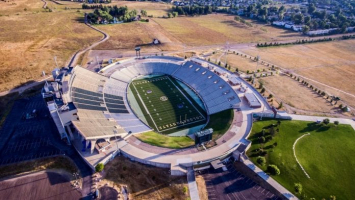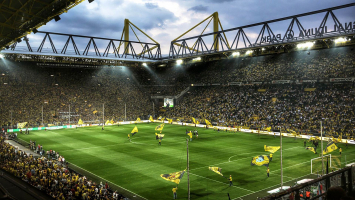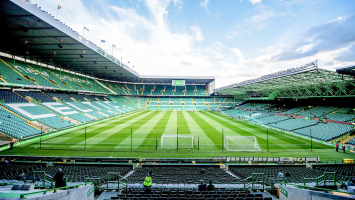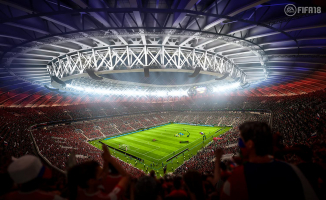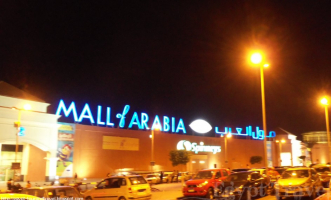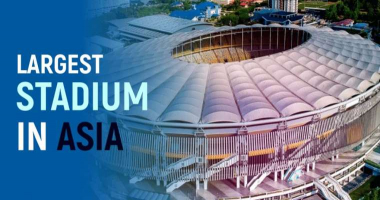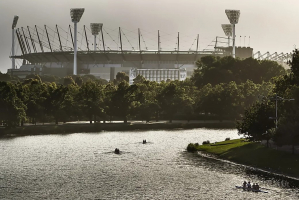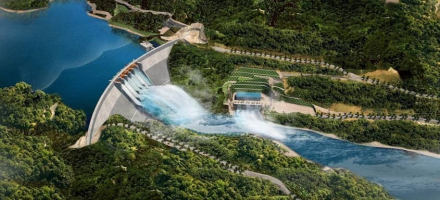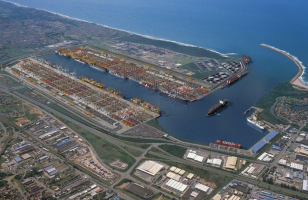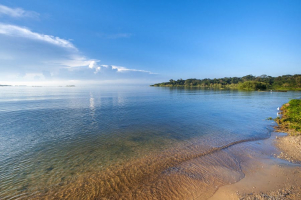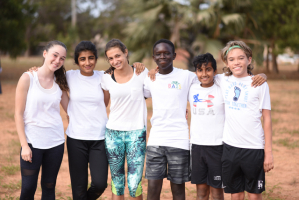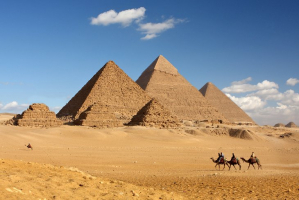Top 10 Biggest Stadiums in Africa
A stadium is a place or venue for (mainly) outdoor sports, concerts, or other events that consists of a field or stage surrounded by a tiered structure that ... read more...allows spectators to stand or sit and watch the event. The top sports stadiums in Africa are listed below. The design and architecture of these institutions are varied. If you enjoy sports, you will be thrilled to learn where some of Africa's most spectacular stadiums are located. They can be found all throughout the continent. This article lists the largest stadiums in Africa, ranked by their capacity for spectators. The figures represent the permanent total capacity of each stadium, which includes seats and any official standing sections. Check out the list with Toplist right now!
-
This magnificent 94,736-seater, located in Nasrec, south of Johannesburg, is South Africa's largest venue and the country's proud global behemoth.
FNB Stadium's distinctive architecture has earned it the nickname "Calabash" or "African Pot" since it was refurbished for the first-ever African World Cup in 2010 at a cost of R3.3 billion.
Formerly known as Soccer City, the stadium has hosted a number of important events, beginning with former President Nelson Mandela's first speech in 1990, just days after his release from a 27-year prison sentence.
The facility has held some of the country's major sports and music events, including the 2010 FIFA World Cup TM opening and closing ceremonies, as well as the final. The stadium also hosted the continental Africa Cup of Nations final in 2013.
For local and international football matches, FNB Stadium is usually packed to capacity. It is the favored viewing platform for the Soweto derby, which pits two South African Premier Soccer League football powerhouses, Kaizer Chiefs and Orlando Pirates, against each other.
International rugby test matches and performances by the world's best music performers, such as U2, Lady Gaga, and Justin Bieber, have also drawn record crowds.
Other notable events in the country have been held at FNB Stadium, including the funeral of political leader Chris Hani in 1993 and the poignant memorial service tribute to Nelson Mandela in 2013.
Capacity: 94,736 seats
Location: South Africa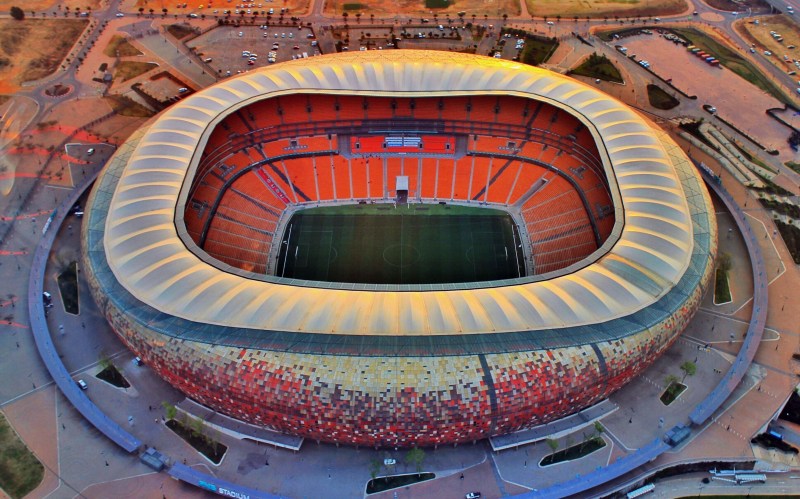
Photo: ABrandNewSky 
Photo: tripadvisor -
The Borg El Arab Stadium, located about 25 kilometers west of Alexandria in Egypt, is the country's largest stadium and the continent's second-largest. It was commissioned in 2005 and is known as the El Geish Stadium – Alexandria. The stadium has an all-seater capacity of 86,000, making it Egypt's largest.
This grass-surfaced stadium with a field size of 105 by 70 meters is also the world's 27th largest stadium and the 9th largest association football stadium. There are running paths all the way around the pitch. The stadium's ground features four huge floodlights and one covered stand. This stadium was created as part of a larger initiative to construct five international-standard stadiums for Egypt's bid to host the 2010 FIFA World Cup.
Despite the fact that the stadium, along with the Cairo International Stadium and the Gaza Mubarak Stadium, is home to the Egyptian national football team, it has yet to be the home ground of any of Egypt's football clubs.
This is due to the fact that they have yet to reach the 20,000+ threshold in any of their current games and are well-known for it. Every year, the Egyptian Cup final matches are placed in the stadium. In addition, Al-Ahly, an Egyptian club, plays some of their home games at the stadium.
The stadium is unique in that it was entirely constructed and built by the Egyptian Armed Forces Corps of Engineers, and was first opened to the public in 2007. The stadium is claimed to be modeled after the Stade de France in France.
Apart from the opening ceremony of the 2009 FIFA U-20 World Cup, the stadium only held one match, the opening match between Egypt and Trinidad & Tobago. It was also the stadium's first international competition.
Since 2012, this stadium has hosted the majority of the Egyptian National's home games. In October 2017, the stadium recorded a record crowd of 86,000 football supporters during the 2018 FIFA World Cup qualifying match between Egypt and Congo. Mohamed Salah scored two goals in Egypt's victory over Congo.
The stadium currently hosts the Egypt Cup, Egypt Super Cup, and Egyptian Premier League.
Capacity: 86,000 seats
Location: Egypt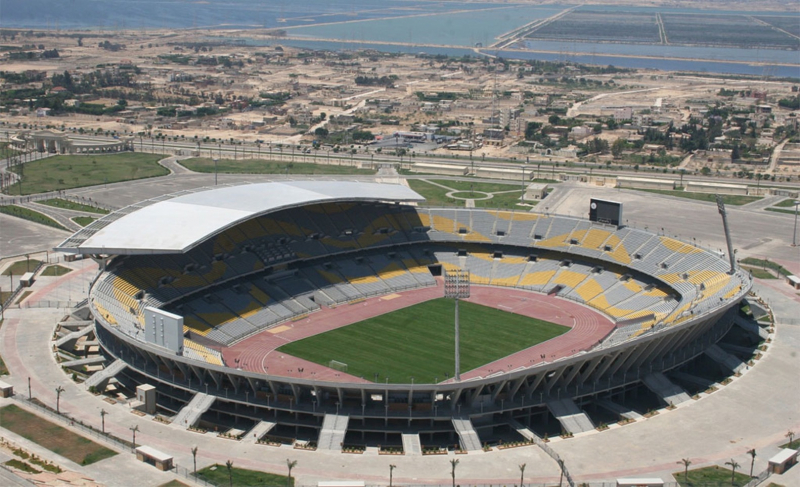
Photo: archdaily 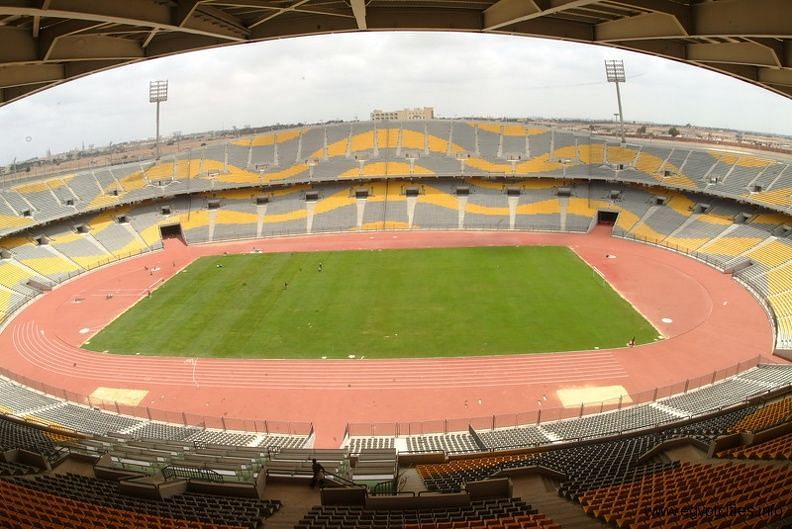
Photo: sportskeeda -
Stade des Martyrs is one of Africa's largest soccer stadiums. It can be found in the Democratic Republic of Congo. The Stade des Martyrs, formerly known as the Stade Kamanyola, is located in Lingwala, Kinshasa, the country's capital. The project started on October 14, 1988, and finished on October 14, 1993. The former National Stadium, the Stade Tata Raphael, was demolished to make way for it. It is primarily used for soccer matches, but it has also hosted athletic contests and concerts.
The stadium was renamed "Stade des Martyrs de la Pentecôte" in 1997 to honor Évariste Kimba, Jérôme Anany, Emmanuel Bamba, and Alexandre Mahamba, four ministers who were purged by Mobutu Sese Seko and executed at the site on June 2, 1966.It is the home stadium of the Democratic Republic of the Congo National Team, as well as the AS Vita Club and DC Motema Pembe in the DRC Football Championship. The stadium has an 80,000-seat capacity for international matches and a 125,000-seat capacity for national matches.
Capacity: 80,000 seats
Location: Democratic Republic of the Congo
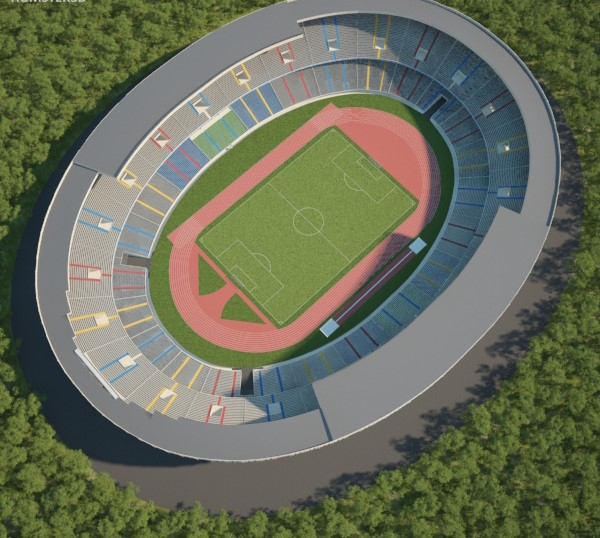
Photo: hum3d 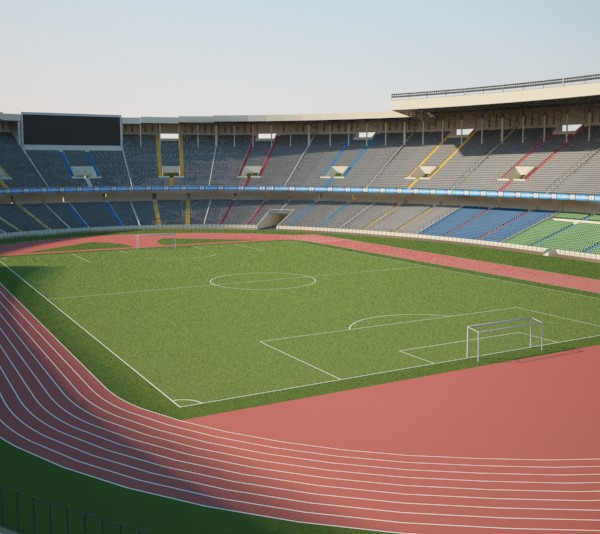
Photo: hum3d -
Cairo International Stadium, formerly known as Nasser Stadium, first opened its doors in 1960. It could house over 100,000 spectators at the time, with unofficial attendances exceeding 120,000.
In 2005, the stadium had a major renovation in preparation for the 2006 Africa Cup of Nations, which was held in the country. It held the tournament's opening match and final, among other things. This stadium in Egypt has a seating capacity of 74,100 people. The multi-use stadium is a former Olympic venue that is well-equipped for regional sporting events.
The Cairo International Stadium is one of the Egypt national team's main playing grounds. Although it is not the permanent home of any club team, it is used by a number of Cairo-based clubs, including elite clubs Al Ahly and Zamalek, for high-profile fixtures. Other than that, they play their home games in lesser stadiums across Cairo and the rest of the country.
Capacity: 74,100 seats
Location: Egypt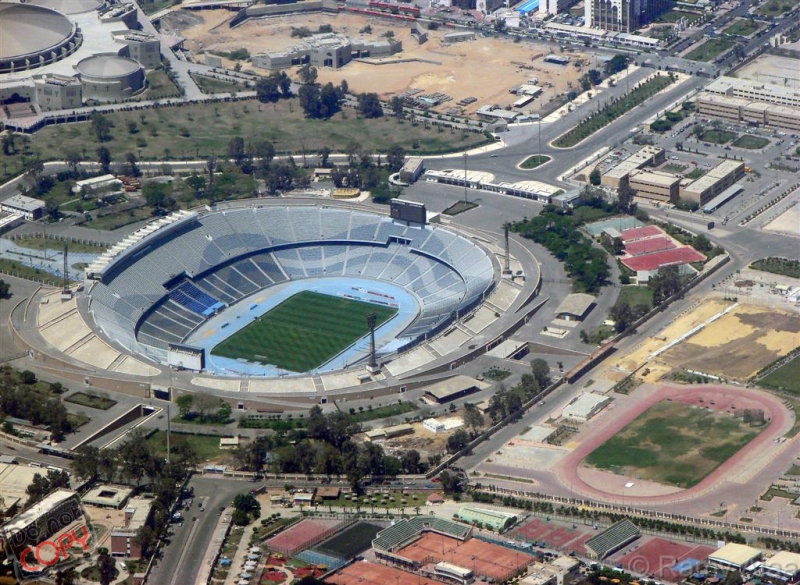
Photo: skyscrapercity 
Photo: stadiumguide -
The Stade Mohammed V first opened its doors on March 6, 1955. The stadium was originally named Stade Marcel-Cerdan after the French boxer, but after Morocco gained independence one year later, it was renamed Stade d'honneur.
The stadium's capacity was initially 30,000, but it was increased to 90,000 in the late 1970s in preparation for the Mediterranean Games of 1983. The stadium was renamed after Mohammed V, the former King of Morocco, following its reopening.
Following Morocco's bid for the 2010 World Cup, Stade Mohammed V had a massive renovation in the 2000s. The capacity was lowered to 67,000 seats when benches were replaced with seats.
The Stade Mohammed V is located in Casablanca's west end, around 3 kilometers from the city's central Mohammed V Square and a bit further from the Old Medina. Between Mohammed V Square and the stadium is the modern Maarif neighborhood.
Capacity: 67,100 seats
Location: Morocco
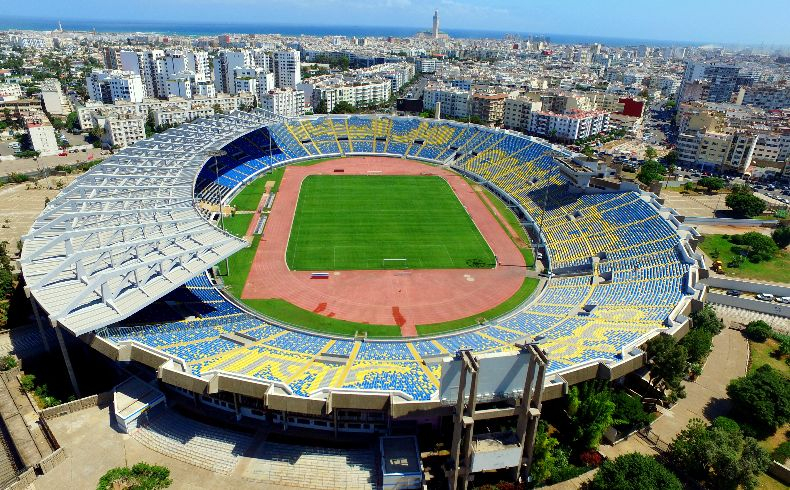
Photo: goalzz 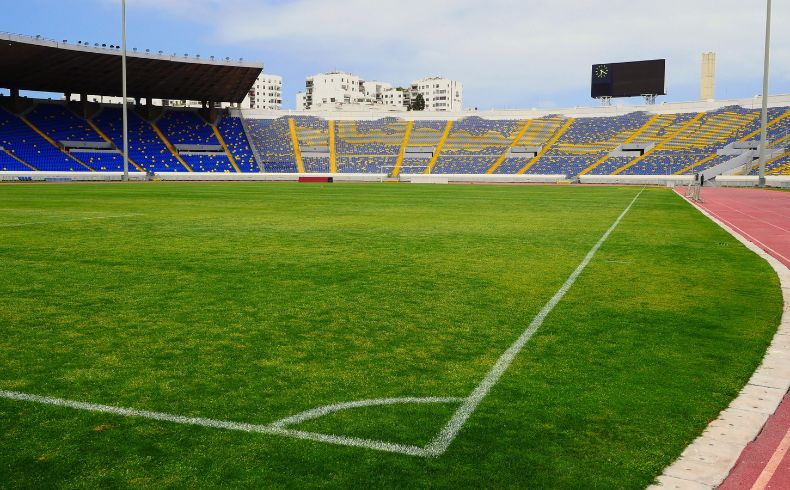
Photo: goalzz -
Mogadishu Stadium is a stadium in the Somali capital of Mogadishu. On March 27, 2020, the stadium was totally reconstructed and artificial turf was installed.
The facility was built with the help of Chinese engineers in 1977, during the administration of Siad Barre. Although Mogadishu Stadium was mostly utilized for sporting events, it also hosted presidential addresses, political rallies, and other events.
The legendary "Mogadishu and Magool" concert was held in 1987 at the basketball arena (next to the soccer stadium), which is part of this large sports facility/village. With thousands of people in attendance, it was one of the largest such musical events held at the time.
In 2013, the newly formed Federal Government of Somalia, in collaboration with Chinese officials, began refurbishing the stadium.
The artificial turf had been renovated by 2015. The stadium has also resumed its role as one of the city's principal sporting grounds, hosting Somali League football matches.
The Mogadishu Stadium has a seating capacity of 65,000 people. It has a track and field facility, as well as fields for football, basketball, volleyball, and tennis.
Capacity: 65,000 seats
Location: Somalia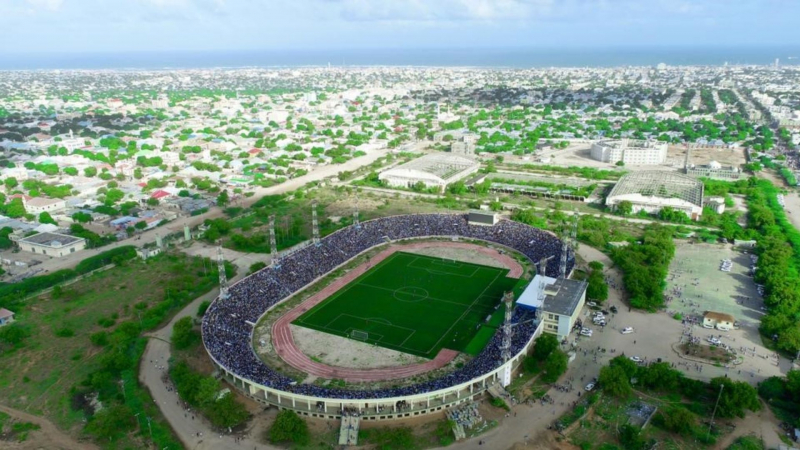
Photo: insideworldfootball 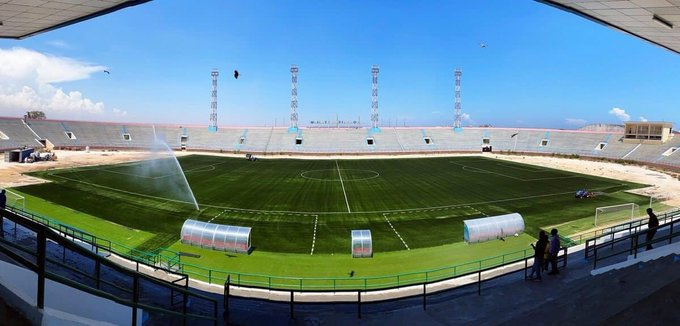
Photo: twimg -
The Stade du 5 Juillet 1962 (named after the day Algeria gained independence on July 5, 1962) is a football and athletics stadium in Algiers, Algeria. The 95,000-seat stadium first opened its doors in 1972.
It hosted the Mediterranean Games in 1975, the All-Africa Games in 1978, the Pan Arab Games in 2004 and the All-Africa Games in 2007. The stadium was one of two locations for the African Cup of Nations in 1990. (the other venue was the Stade 19 Mai 1956 in Annaba). It held nine tournament matches, including the final, which drew a second-highest crowd of 105,302 spectators. Algeria won the event by defeating Nigeria 1–0 in the final match.
The Algerian-based stadium hosts 64,000 people sitting. On March 3, 2010, a friendly match between Algeria and Serbia drew 110,000 spectators, setting a new record. It also hosted the African Athletics Championships in 2000. The stadium was decreased to an 80,200 capacity after formal conformity with current safety regulations in 1999. After further renovations in 2003, the capacity further declined to what it is today.
Capacity: 64,000 seats
Location: Algeria
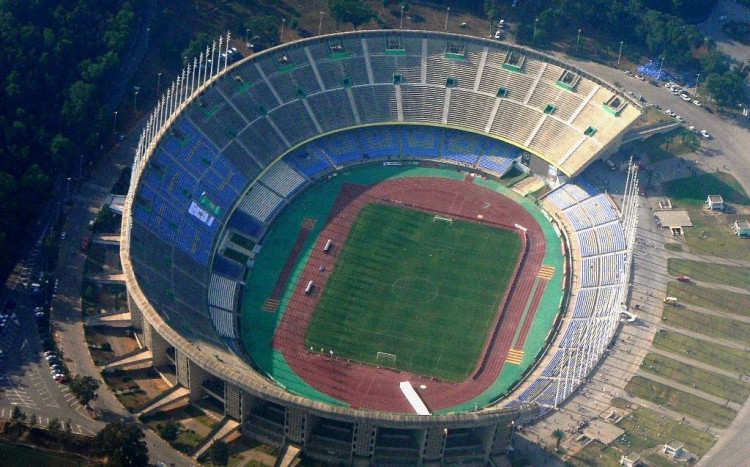
Photo: ostadium 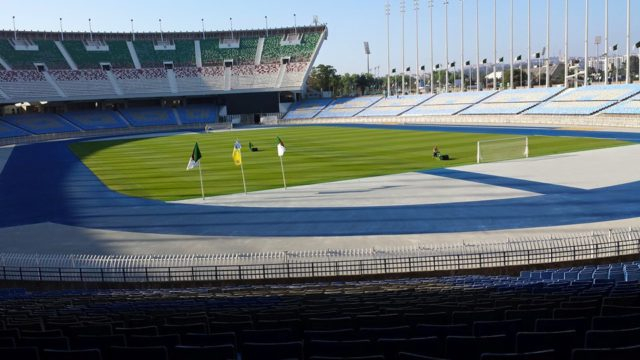
Photo: footalgerien -
The Ellis Park Stadium in Johannesburg, Gauteng Province, South Africa, is a rugby union and association football stadium. It is associated with rugby and served as the site of the 1995 Rugby World Cup Final, in which South Africa defeated New Zealand 15-12 after extra time was allowed, thanks to a last-minute drop goal by Joel Stransky. In 2005, Ellis Park made history by becoming South Africa's first black-owned stadium.
Today, the stadium plays host to football and rugby matches, as well as other significant events and open-air concerts. The venue has a seating capacity of 60 000 and a floor capacity of roughly 10 000.It is a typical square-shaped open-air stadium (although the sides are somewhat curved, giving it more aesthetic appeal).
It now has cutting-edge audio-visual and technical equipment, as well as media facilities, disabled access, nine conference halls, executive suites, and banqueting facilities. These improvements ensure that this is a world-class venue that can accommodate any type of event, whether it's for business, sport, or entertainment.
The Orlando Pirates (Premier Soccer League), Lions (Super Rugby Southern Hemisphere rugby competition), and Golden Lions (Currie Cup domestic rugby competition) all play at Ellis Park.
Capacity: 62,567 seats
Location: South Africa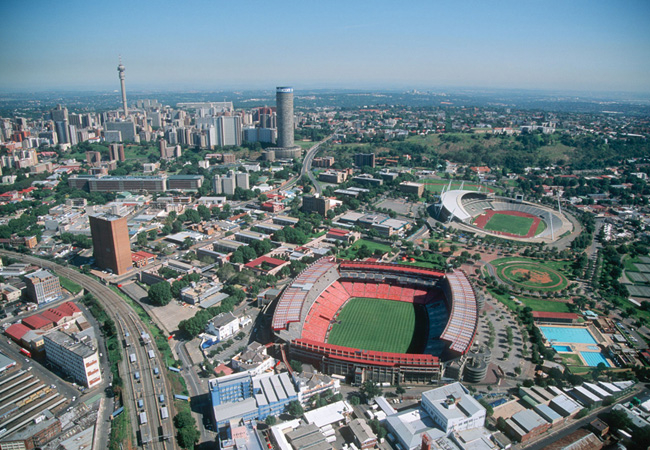
Photo: venues 
Photo: venues -
Moshood Abiola National Stadium is home to the Nigerian national football team and a venue for a variety of social, cultural, and religious activities. On July 18, 2000, the Nigerian Federal Government approved the contract for the construction of the National Stadium complex and Games Village. The stadium was built for the 8th All Africa Games, which were held in October 2003.
On June 12, 2019, President Muhammadu Buhari announced that the National Stadium in Abuja would be renamed Moshood Abiola National Stadium. President Buhari made the announcement during his remarks at the Eagle Square celebration of Democracy Day on Wednesday. It is one of the most important architectural icons in Abuja, Nigeria, having a football arena with a capacity of 60,491 spectators and a modern multifunctional sports complex.
In 2009, the stadium hosted one of the FIFA U-17 World Cup venues. That year, Nigeria hosted the first-ever FIFA U-17 World Cup final. The game drew 60,000 spectators. After defeating Nigeria, the Swiss Confederation, also known as Switzerland, won the football match.
The Nigerian national football team, known as the Super Eagles, plays some of its home games at the Moshood Abiola National Stadium. They have won the African championship on multiple occasions. For the first time in their history, Nigeria won the African championship for national football teams in 1980. After defeating Algeria in front of tens of thousands of fans in Nigeria, they were crowned champions.
Capacity: 60,491 seats
Location: NigeriaVideo: REMEDIA 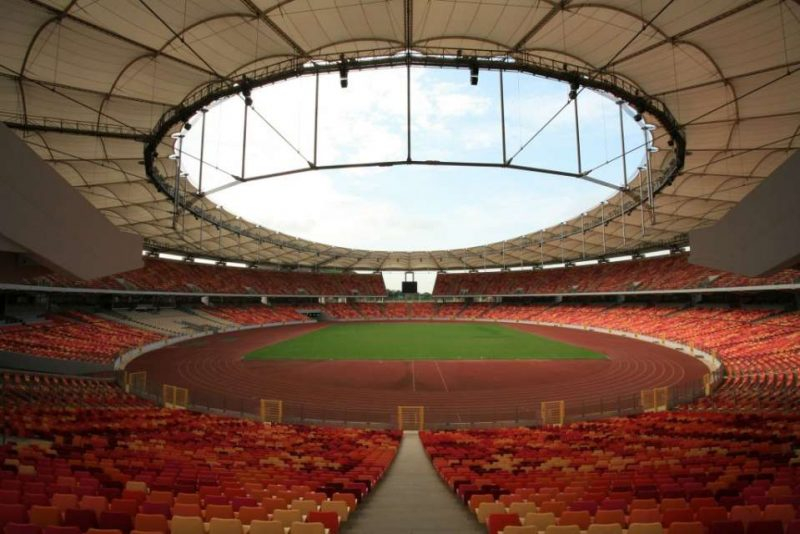
Photo: premiumtimesng -
The Stade de Rades, commonly known as the Stade Olympique de Rades, was erected to host the 2001 Mediterranean Games. Tunisia is the location. Up to 60,000 people can be accommodated at the venue. It's a multipurpose venue that primarily hosts soccer and athletic events. It is one of the few facilities in the region that is regarded as the best.
The stadium opened on July 6, 2001, with the Cup Final between Hammam and Sahel (1-0), and afterward became the home of ES Tunis, who relocated from Stade El Menzah, though they continue to play at their former site on a regular basis.
The French Super Cup Final between Olympique Marseille and PSG was held at Stade de Rades in 2010 (0-0).
The Tunisian national team plays at Stade de Rades on a regular basis, and other teams such as Club Africain use it for high-profile fixtures.
The Stade de Rades lies in the Rades region of Tunis, in the south-east of the city, about 11 kilometers from the city center and 20 kilometers from the Carthage / Sidi Bou Said coastline area in the north-east.
Capacity: 60,000 seats
Location: Tunisia
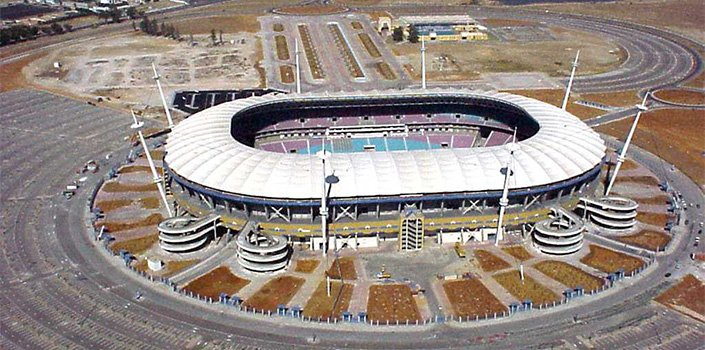
Photo: institutjmg 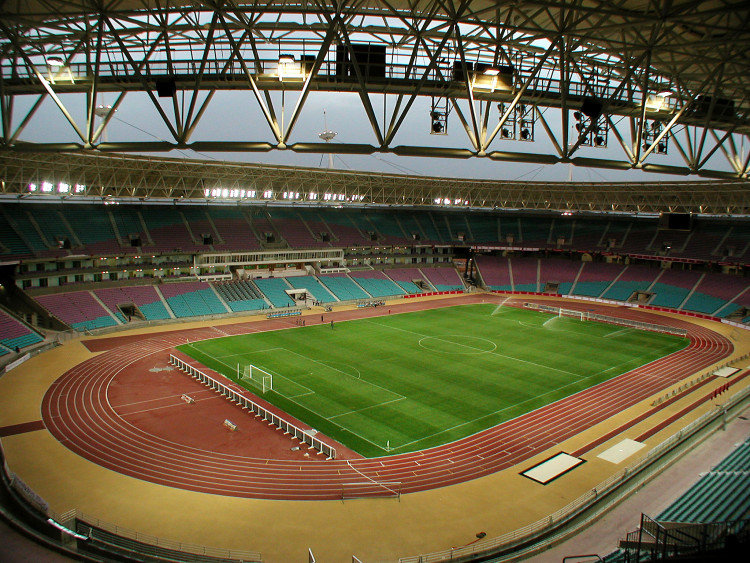
Photo: ostadium












